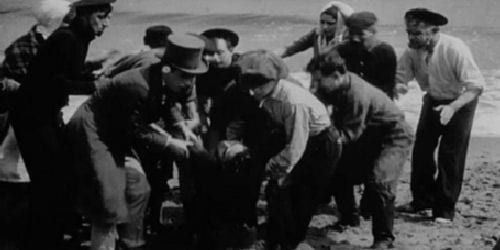
PopMatter previously profiled a collection of films by the Thanhouser Company of New Rochelle, an excellent, ambitious movie studio founded by Edwin Thanhouser. As early as 1911, they experimented with expanding the market beyond one-reel dramas by mounting this three-part version of Charles Dickens’ David Copperfield, released as a kind of serial in weekly installments.
The parts focus on David’s woeful childhood, the episode of Emily’s elopement with Steerforth, and finally his two marriages. When they’d acquired all three parts, exhibitors were encouraged to have a special showing of all three together–about 40 glorious minutes. In the first part, David is played by girl star Flora Foster, a casting decision common for the period. An original nitrate print was preserved in Italy in 1955, and this video comes from a newly restored 35mm print finished in 2012. The Italian cards are still present (with optional English subtitles), and Philip Carli wrote a new score.
As is common for the time, the story is presented in tableaus, with a title card announcing the action of the scene that’s about to unfold without any dialogue cards. Although many scenes are presented in a single shot, with actions composed carefully in depth by director George O. Nichols, there are also many sequences edited together from several shots in a manner that feels modern except that there are almost no close-ups. There’s one interesting medium close-up as Micawber looks over Uriah Heep’s shoulder; the shot is a compromise between Micawber’s viewpoint and the audience’s.
Scholar Joss Marsh offers excellent commentary in which she points out both technical qualities and literary liberties (such as making Copperfield’s wives into sisters). The films include a surprising amount of detail and character for such a truncation, and this is possible both because of silent conventions and the audience’s assumed familiarity with the story. As a bonus, the studio’s excellent half-hour two-reeler of Nicholas Nickleby (1912) is also included; it’s previously been available in Volume 8 of the Thanhouser DVD collection.

![Call for Papers: All Things Reconsidered [MUSIC] May-August 2024](https://www.popmatters.com/wp-content/uploads/2024/04/all-things-reconsidered-call-music-may-2024-720x380.jpg)



